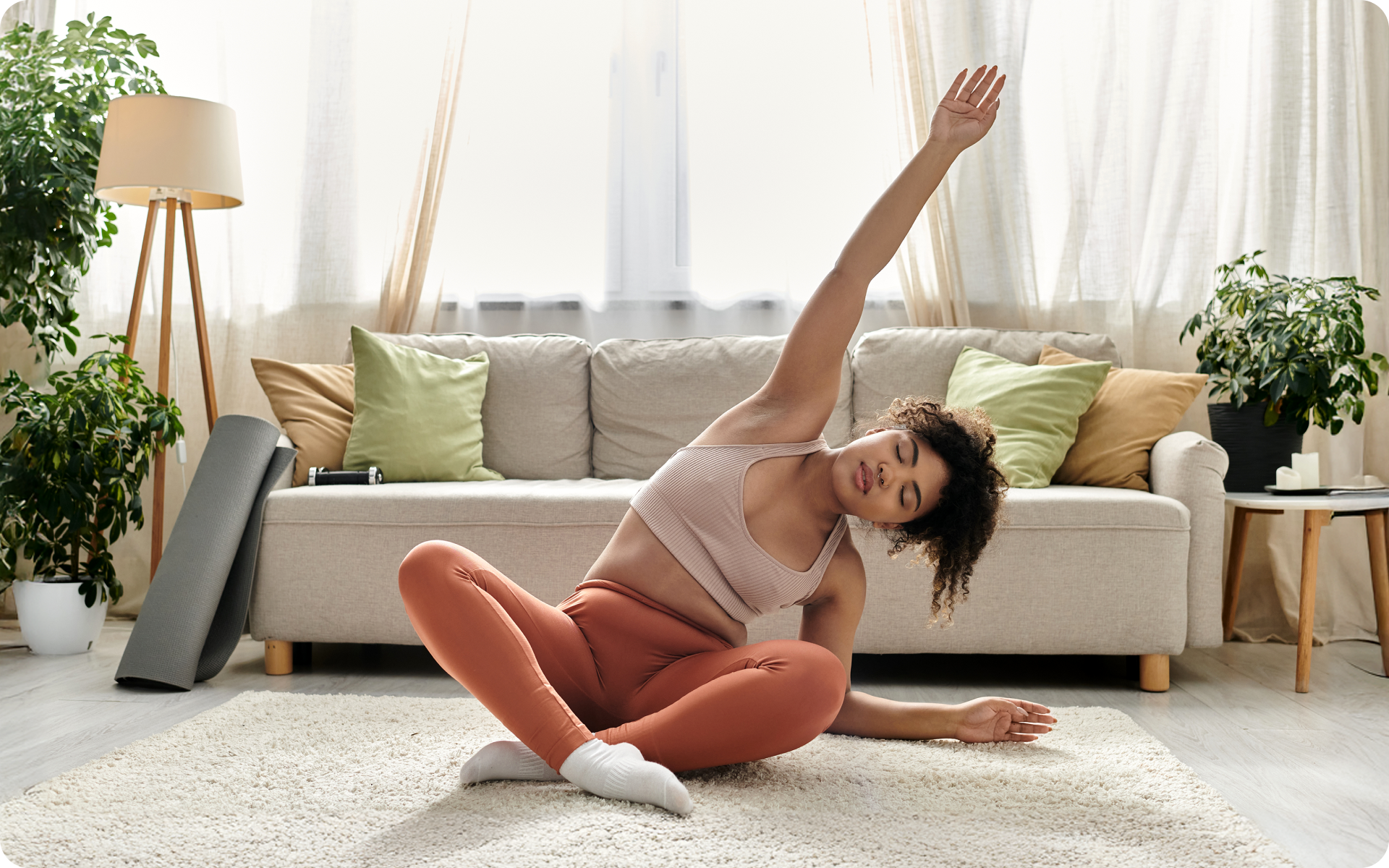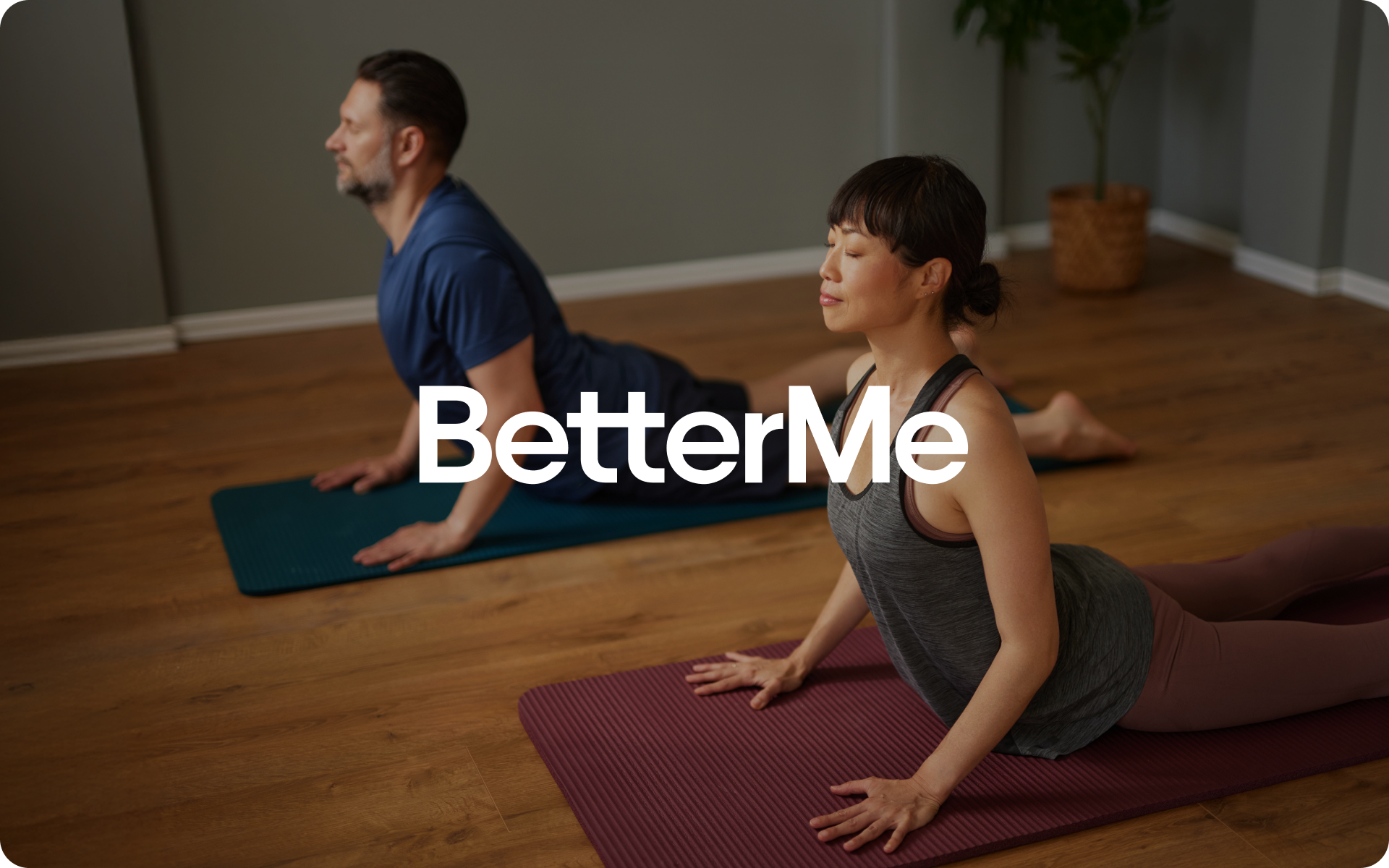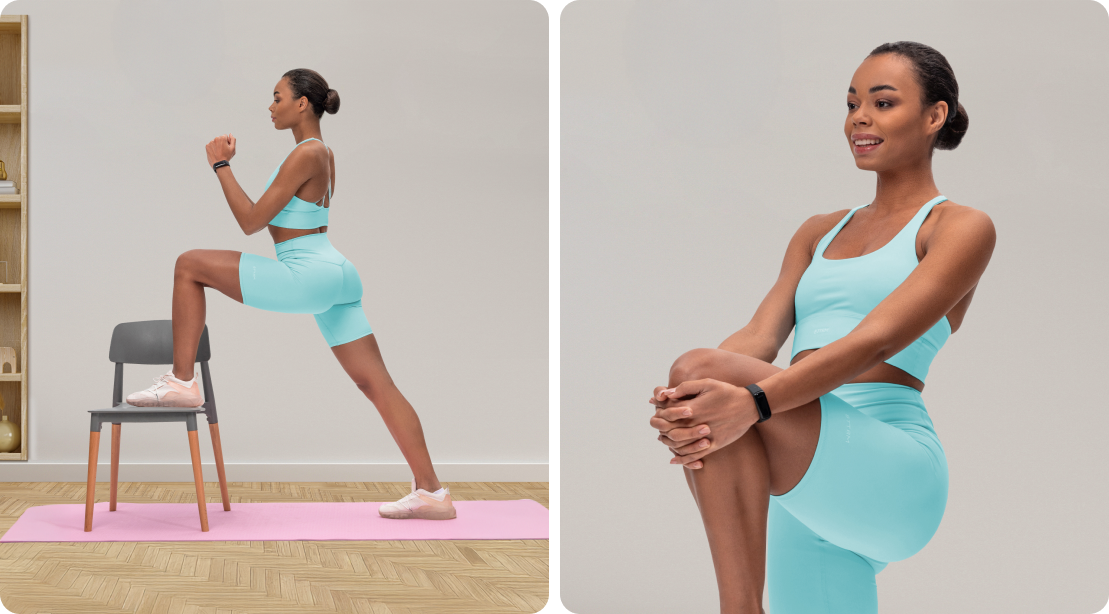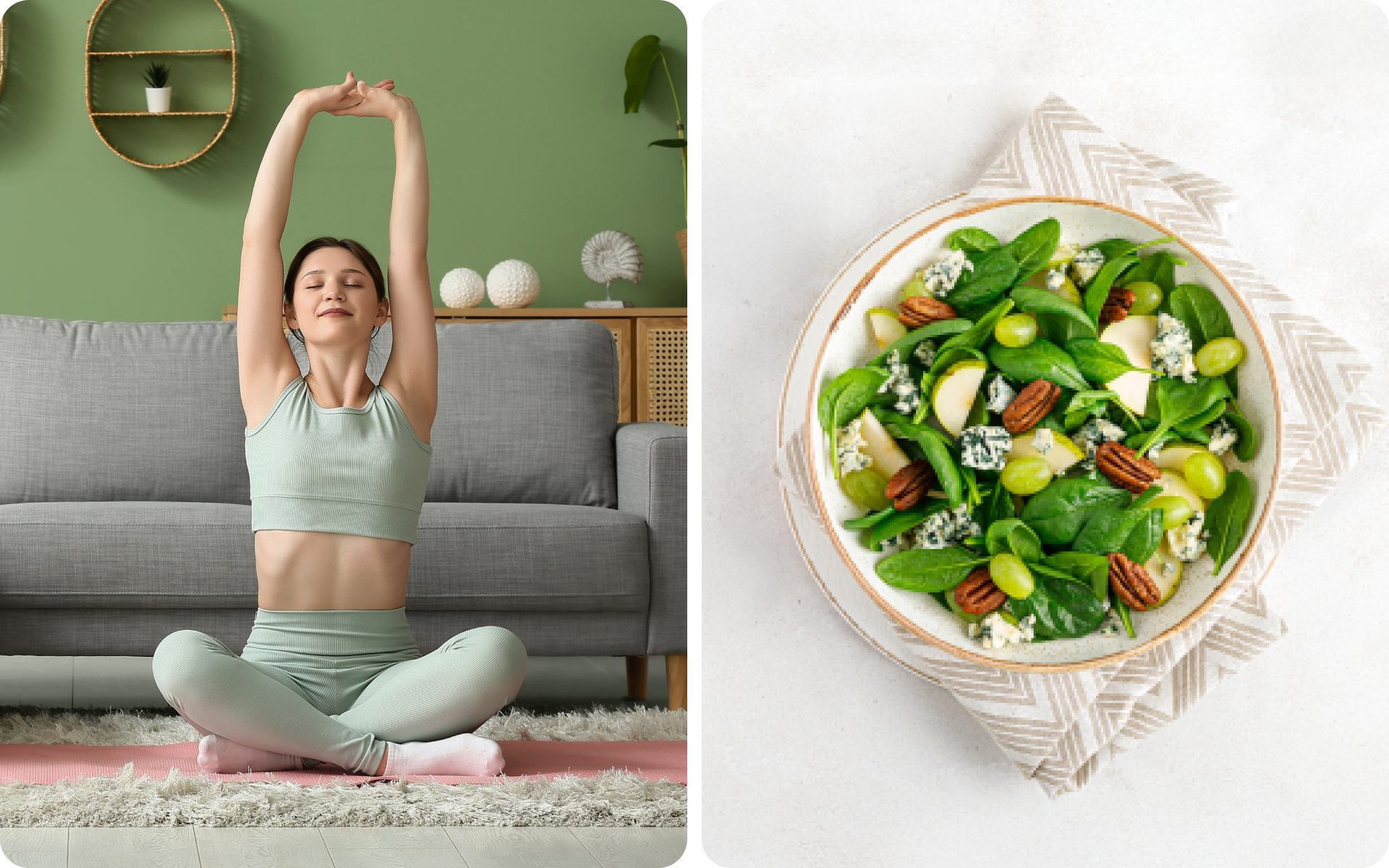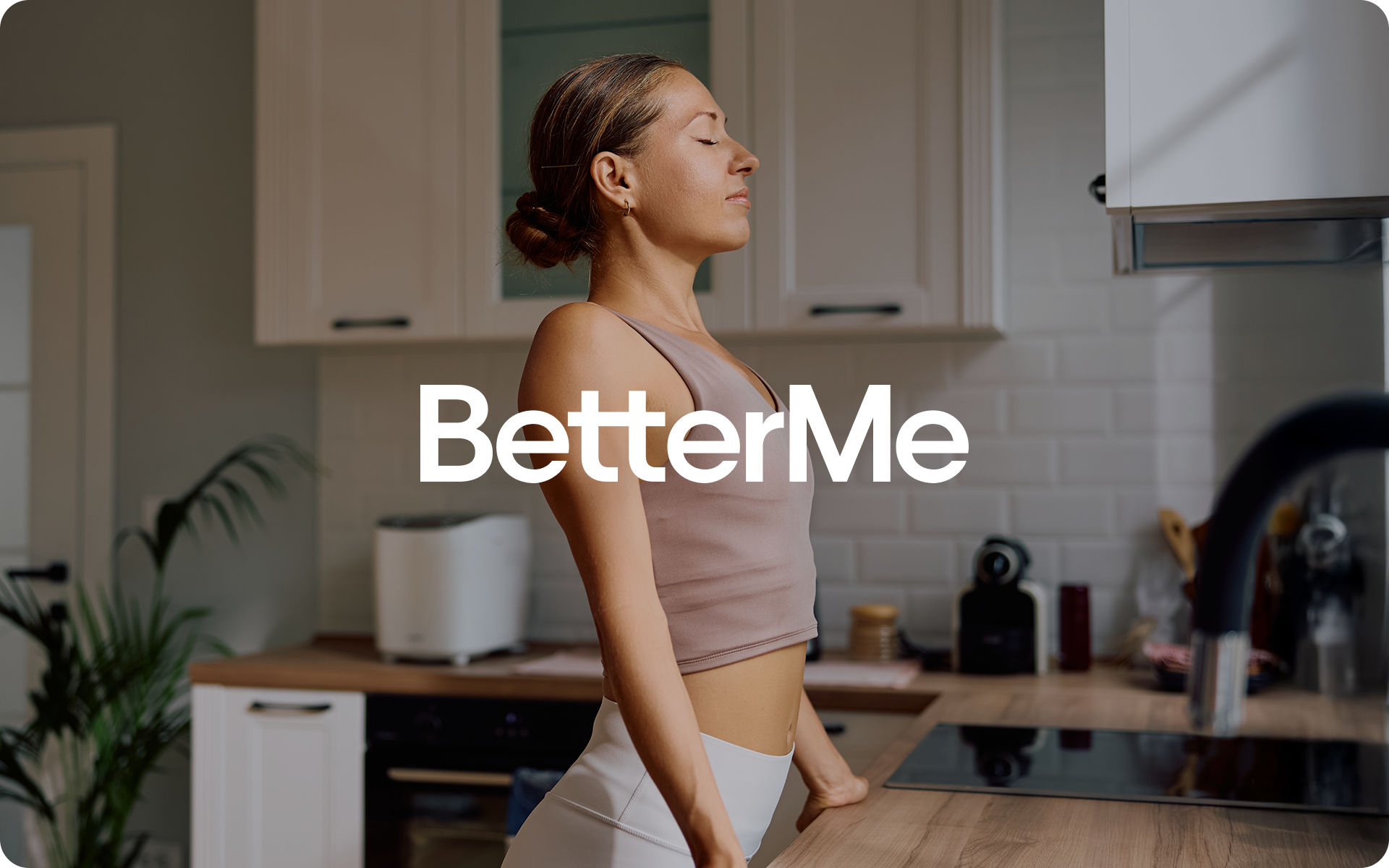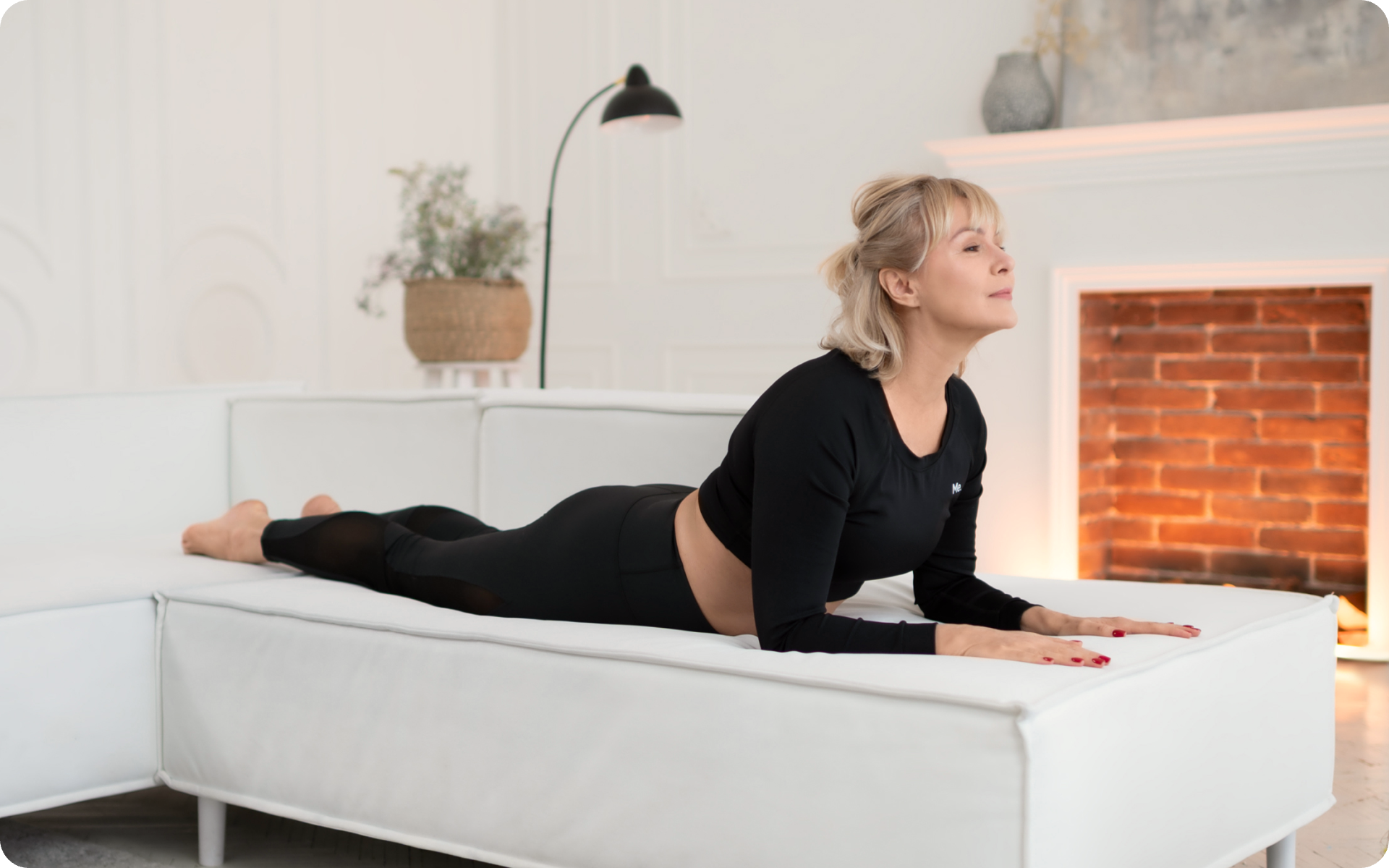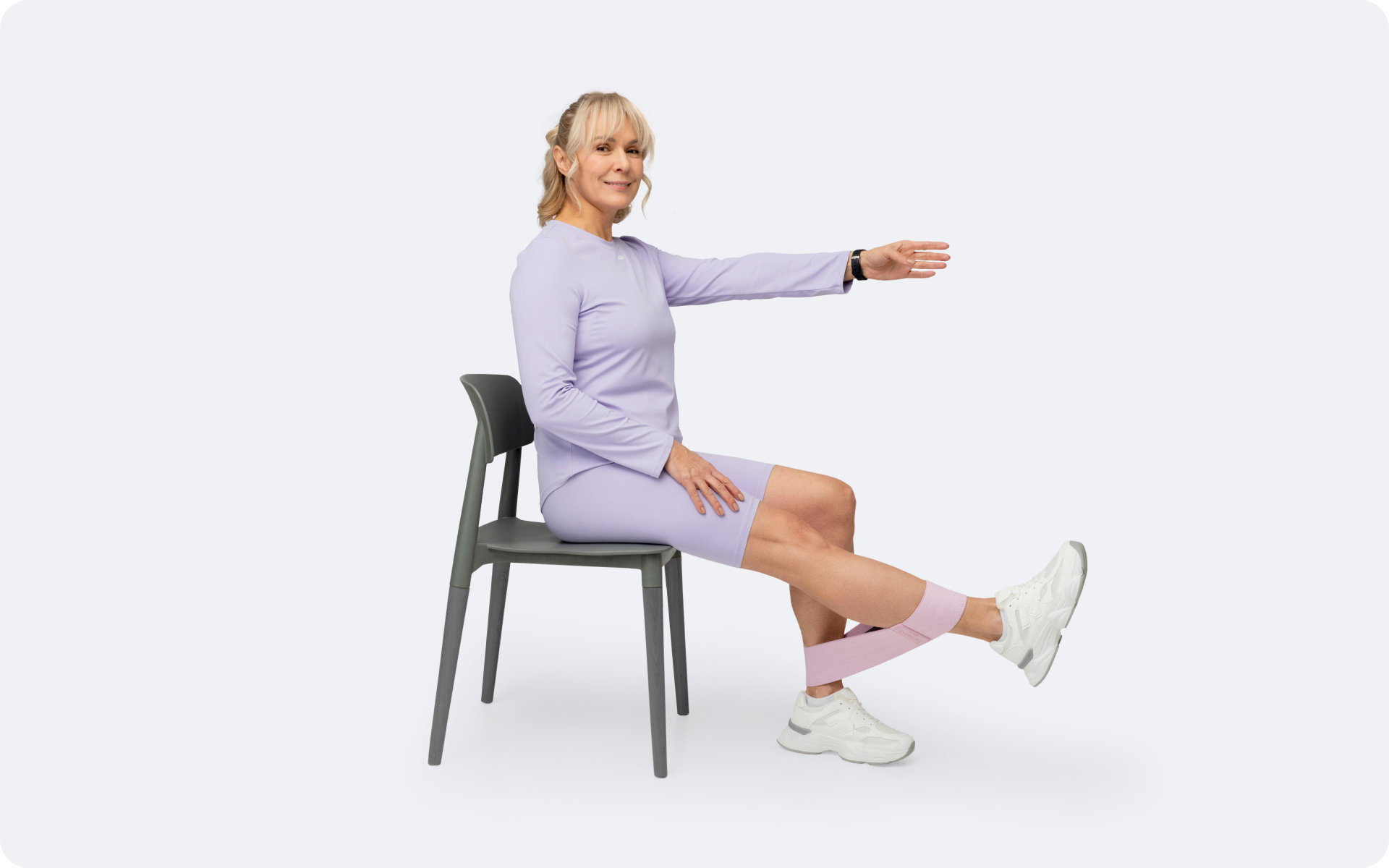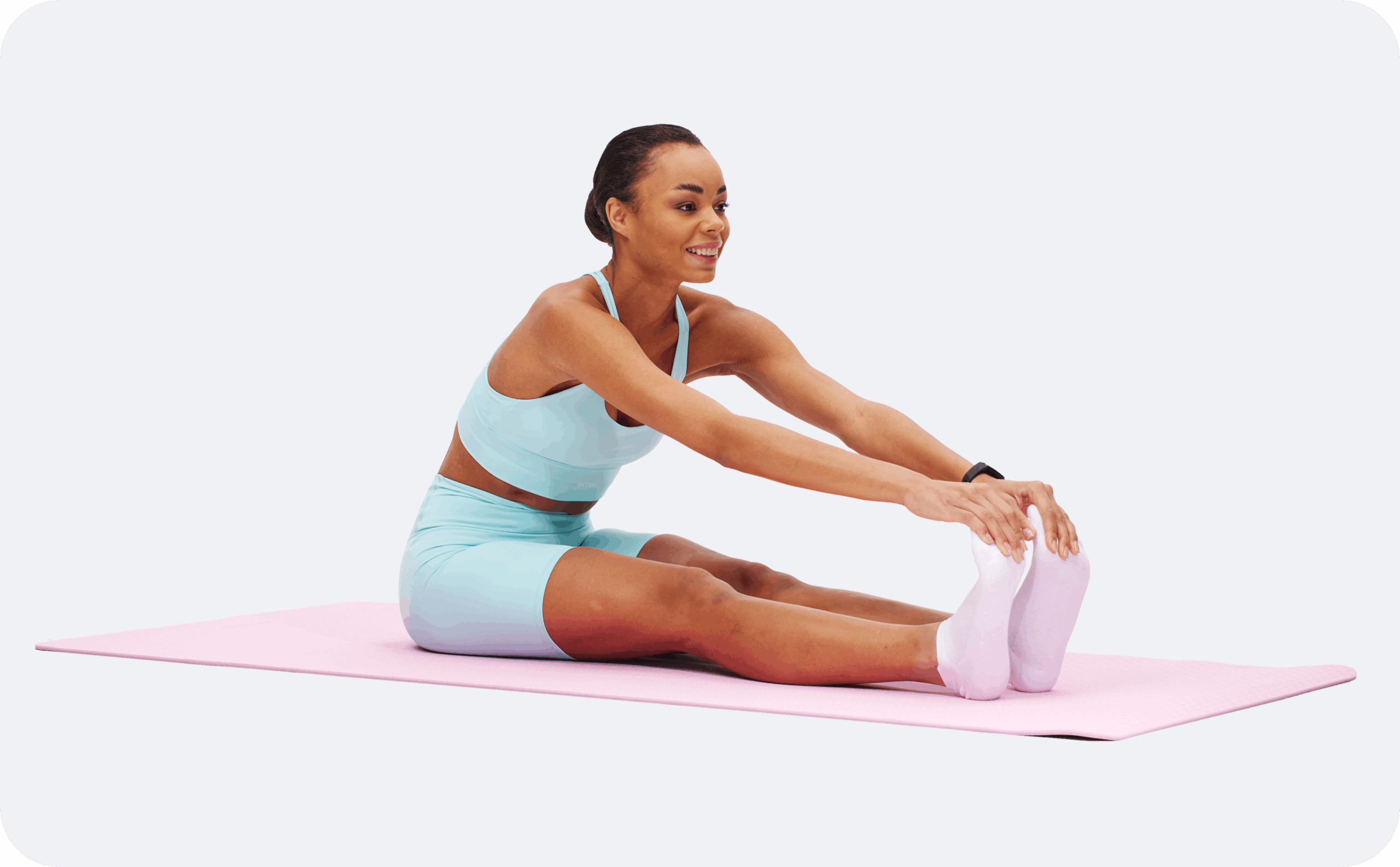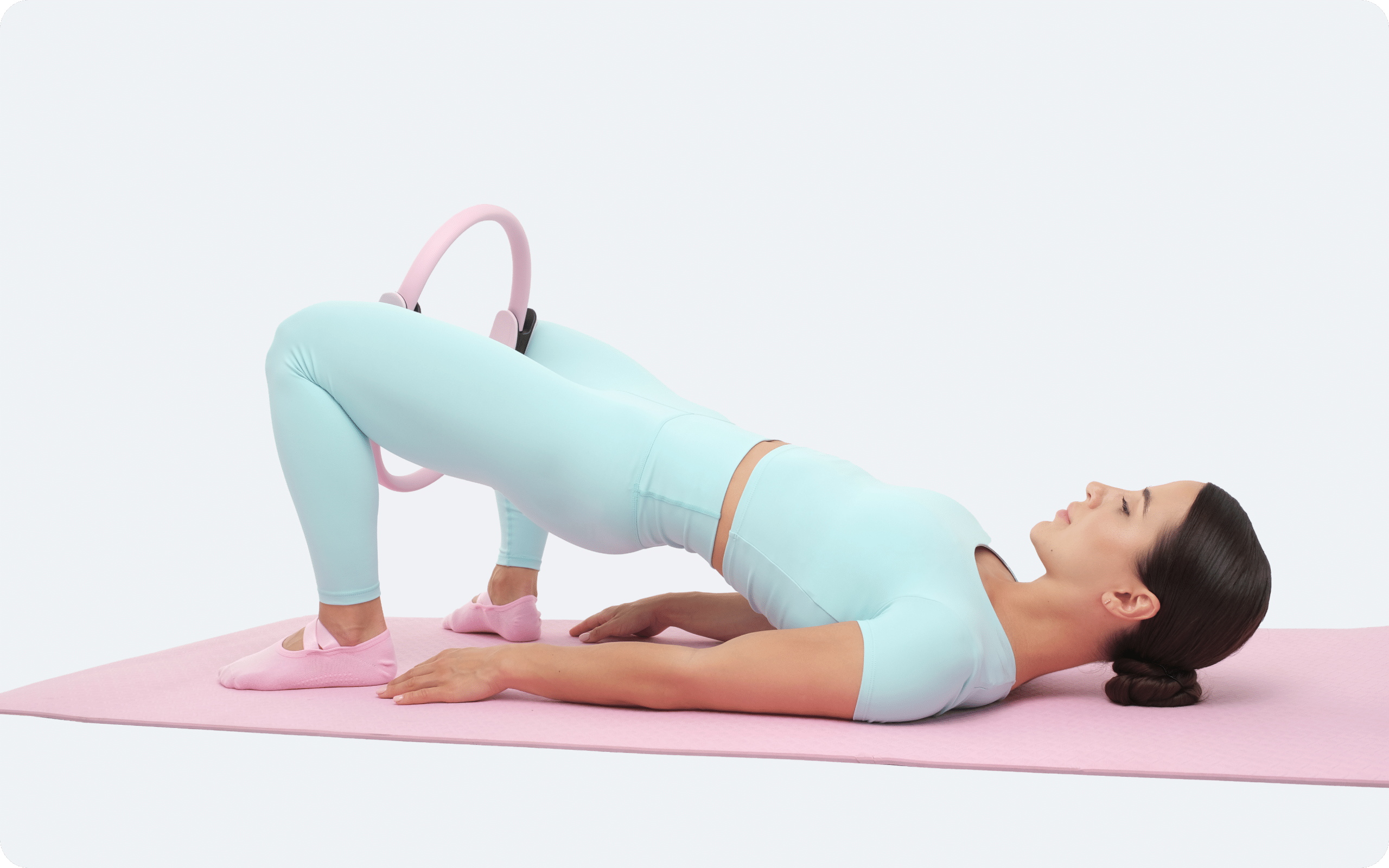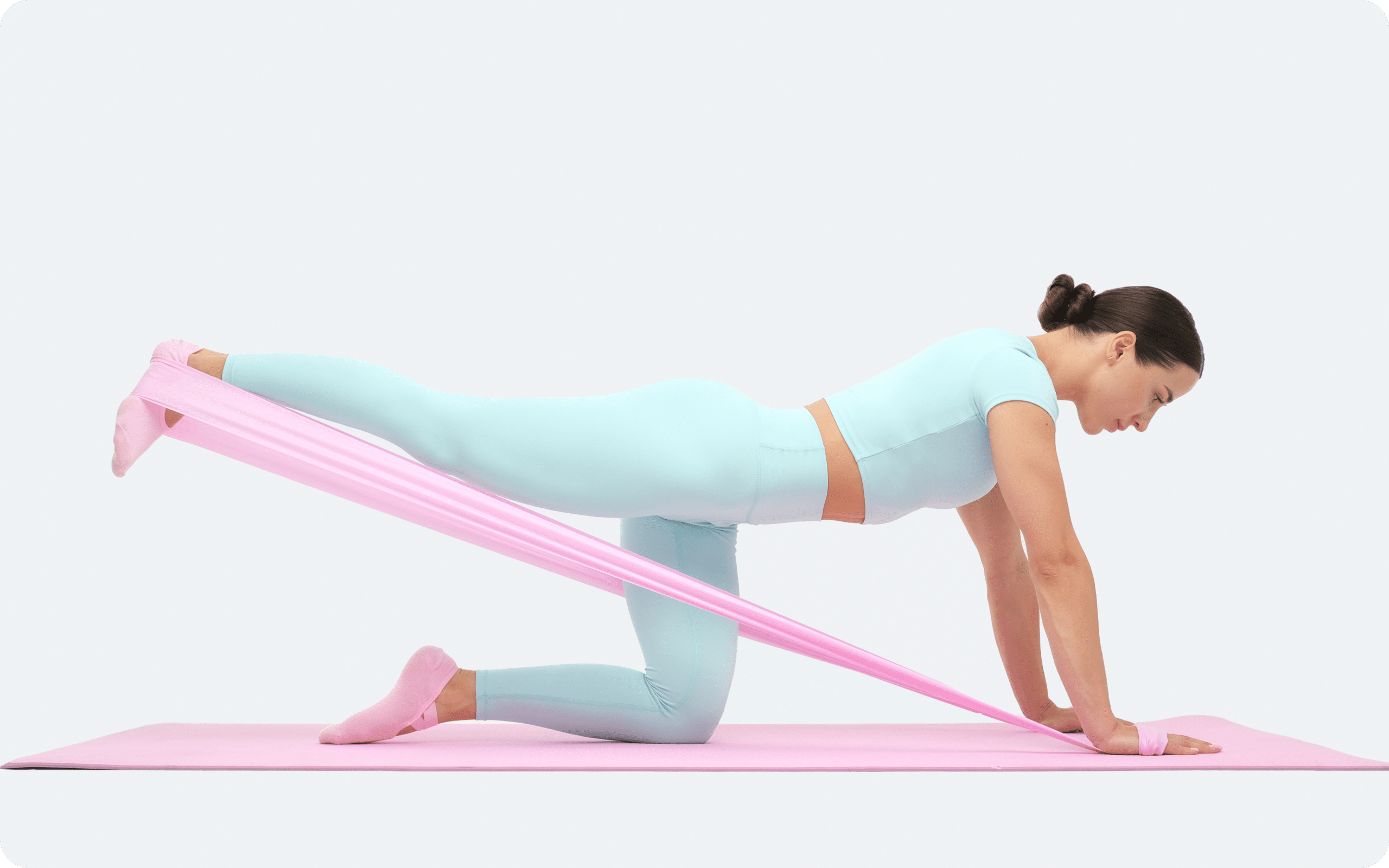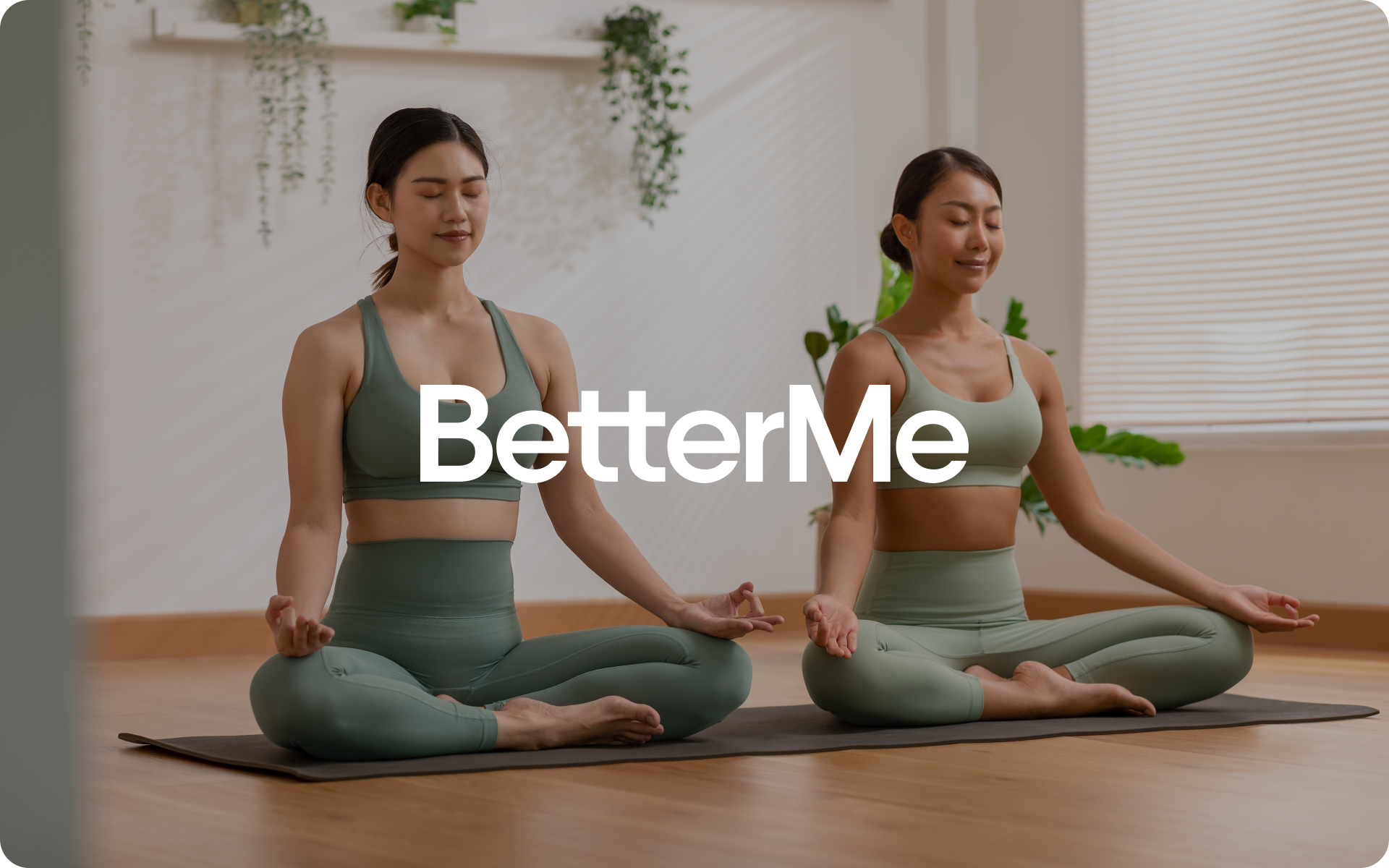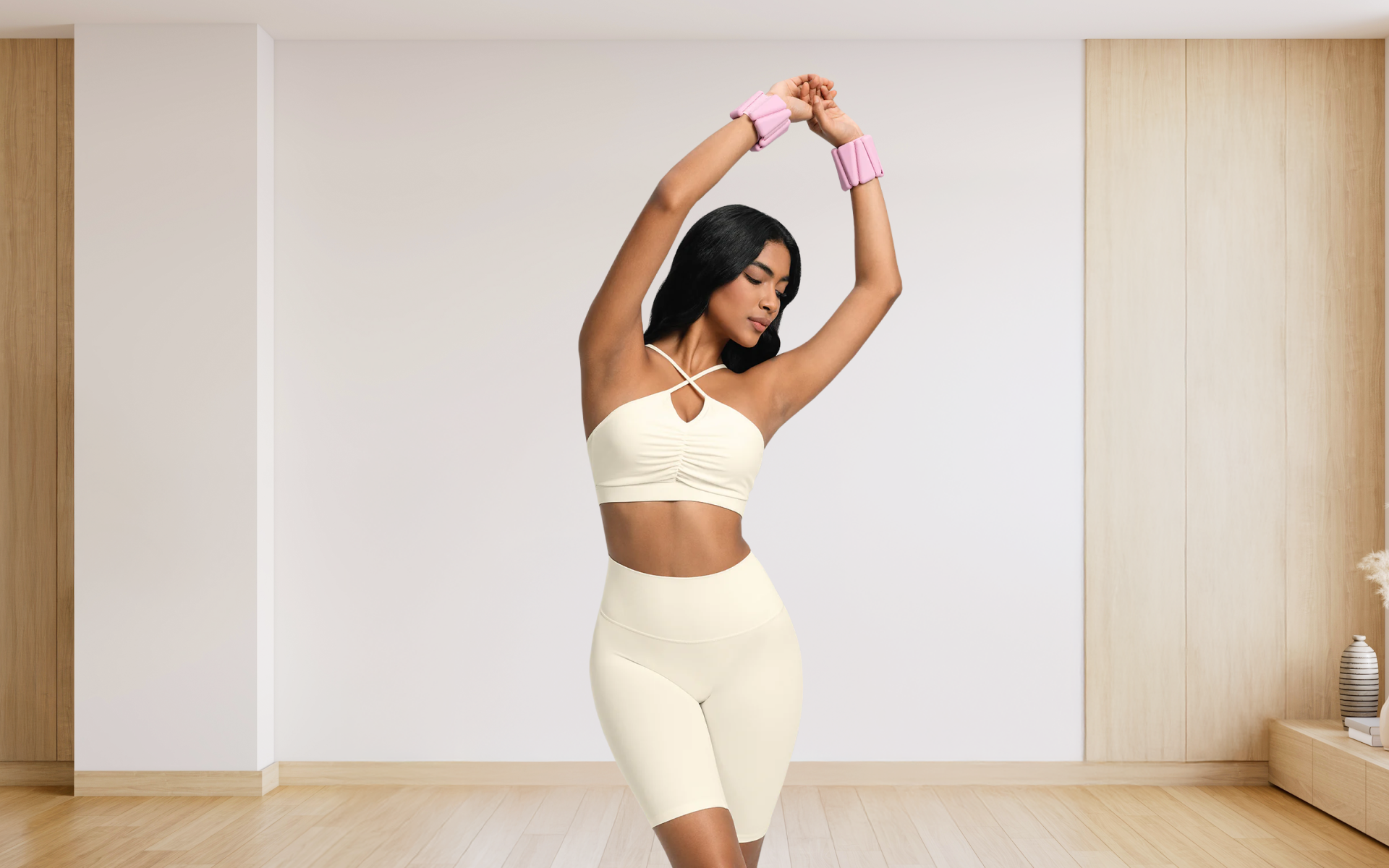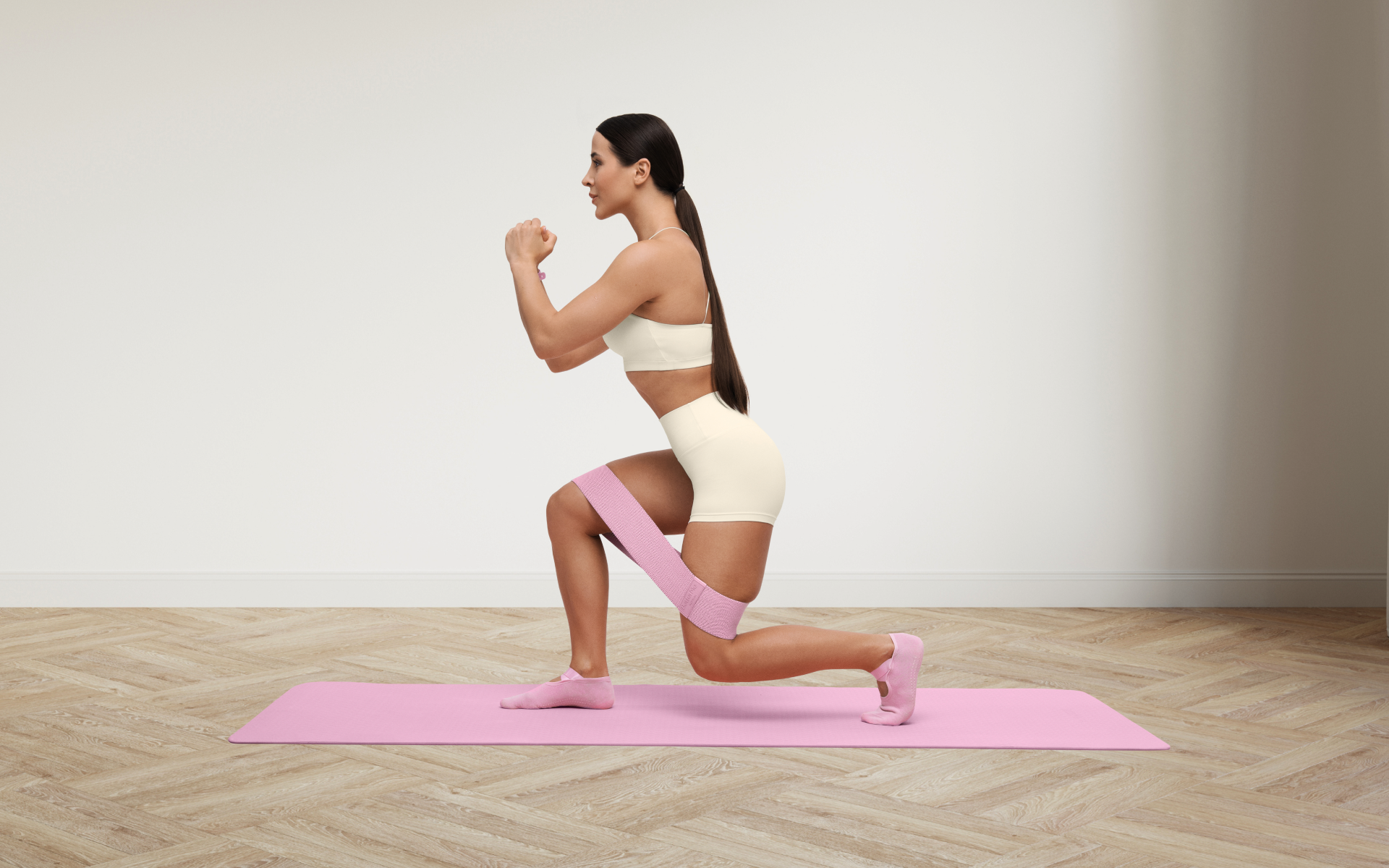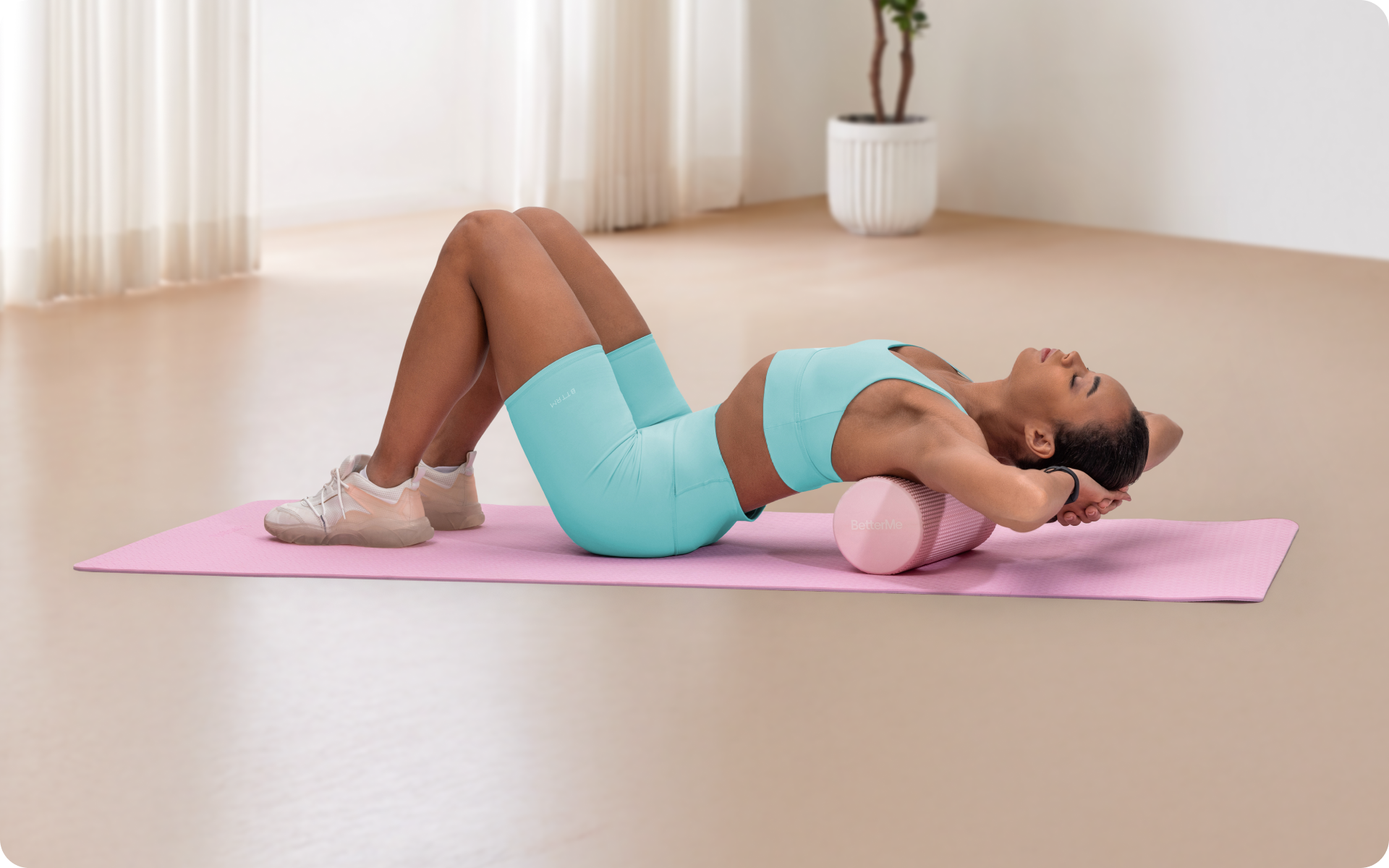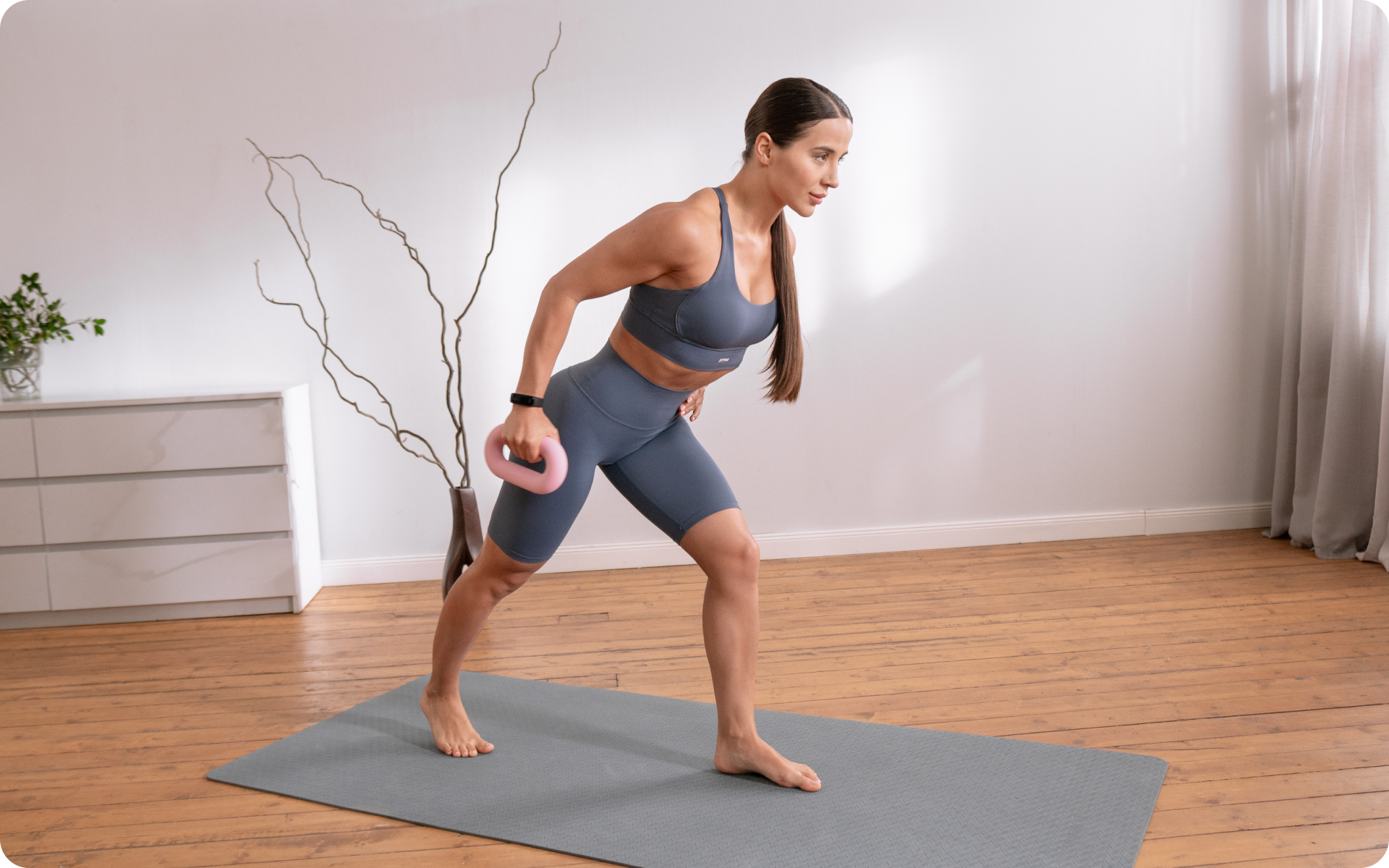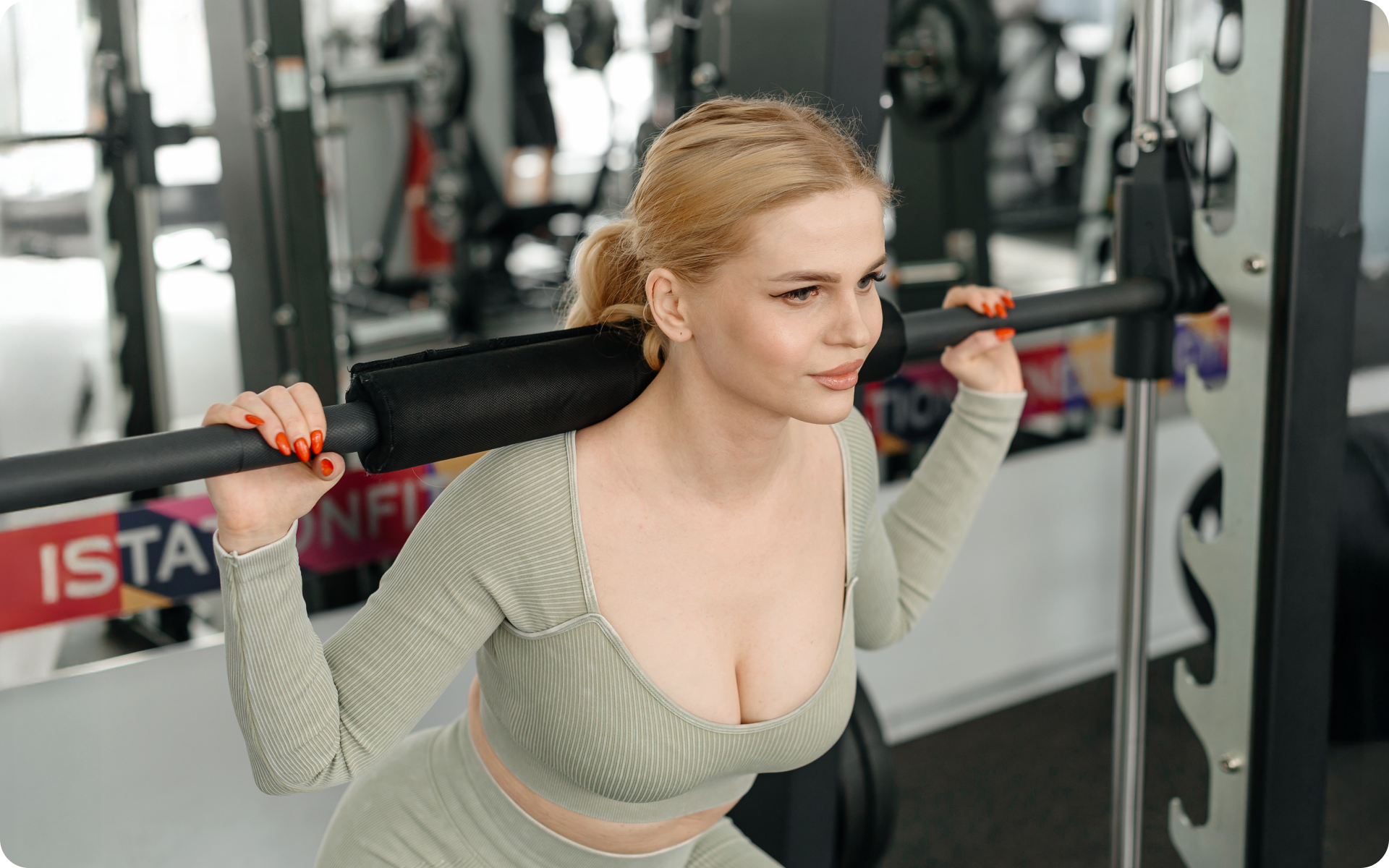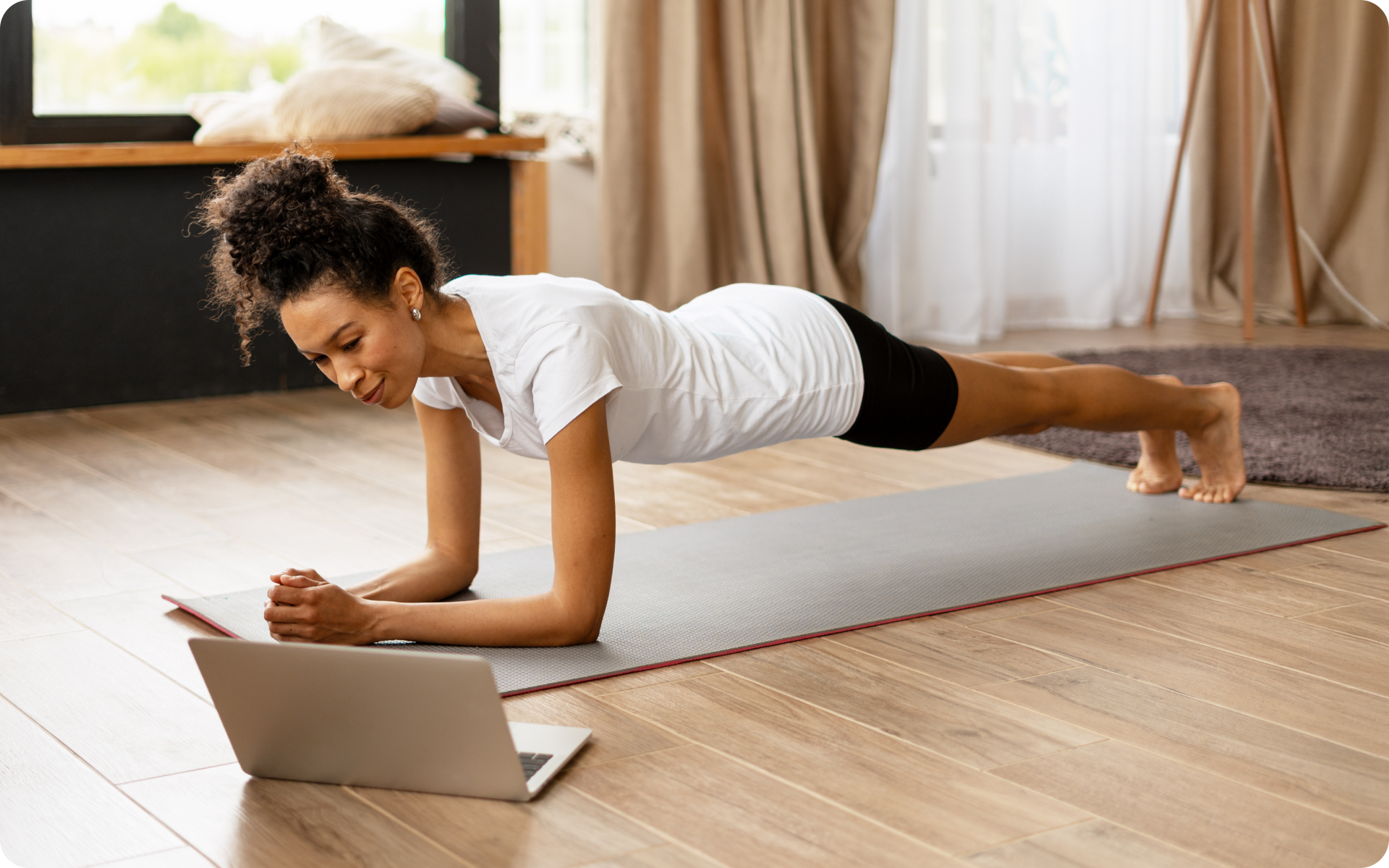Stretching is a widely practiced physical activity that is known for its flexibility, posture improvement, and muscle relaxation benefits. It involves extending the muscles beyond their usual capacity, potentially improving range of motion and decreasing the risk of injury.
Some techniques focus on static stretches—holding a pose for a period—while others emphasize dynamic movements to loosen the body.
In the search for natural ways to boost physical attributes, you may wonder if stretching can also contribute to an increase in height. This curiosity stems from the belief that elongating the spine and legs through specific exercises can result in a more statuesque physique.
Here’s what scientific studies and expert opinions reveal about the relationship between stretching and height.
What Are the Benefits of Stretching?
Stretching has many benefits, including the following 8, which are discussed in detail below:
1. Increases Flexibility
Flexibility is the range of motion that a joint can move, and stretching helps increase it by lengthening the muscles and tendons. With increased flexibility, daily activities such as bending over or reaching high shelves become easier and more comfortable (10).
2. Improves Posture
Poor posture can lead to neck, shoulder, and back pain, and even headaches. Stretching helps reduce muscle tension that may contribute to poor posture, which allows you to realign the spine and joints correctly, reducing the strain and improving posture (10).
3. Relieves Muscle Tension
Tense muscles can cause discomfort and pain, particularly after long hours of sitting or standing. By stretching, you can relax your muscles by increasing blood flow, releasing built-up tension, and reducing the risk of injury (10).
4. Enhances Athletic Performance
Stretching before and after exercise can improve athletic performance by increasing blood flow to muscles, which results in better muscle coordination and range of motion (6).
5. Reduces Stress
Stress can cause muscle tension and soreness that can lead to headaches, body aches, and fatigue. Stretching helps release endorphins, also known as the ‘feel-good’ hormones, to reduce stress and promote relaxation (10).
6. Improves Blood Circulation
Stretching increases blood flow to muscles and joints, which helps deliver oxygen and essential nutrients throughout the body. Improved circulation can also help with injury prevention and recovery (5).
7. Decreases Risk of Injury
Sudden movements or overexertion can lead to muscle strains or tears. By increasing flexibility and improving range of motion, stretching can prevent the occurrence of these injuries (10).
8. Promotes Relaxation
Stretching can also have a calming effect on the mind and body, reducing tension and promoting relaxation (10). This can be particularly beneficial before bedtime to help improve sleep quality.
Our Chair Stretches blog explains how you can also stretch while at your work desk.
If you struggle to even flirt with the idea of giving up your favorite foods or working out till your legs give way – BetterMe app is here to breathe a fresh perspective into the way you view the weight loss process! Check out the app and experience the fun side of fitness and dieting with BetterMe!
Can Stretching Make You Taller?
Although stretching has numerous benefits for the body, there is no scientific evidence that it can increase your height. Height is primarily determined by genetics and growth hormones, and stretching cannot add additional inches to the bones.
That being said, proper posture can give the illusion of height by elongating the spine and making a person appear taller. Stretching can help improve posture, but it won’t permanently change your height (10).
As we dive further into the link between the two, it’s essential to understand a few things about height. Firstly, evidence has shown that most individuals gain approximately 2 inches in height every year between age 1 and puberty (2).
Once you reach puberty, you gain 4 inches in height per year. Research has shown that we have our growth spurt during the teenage years.
Boys experience this sudden growth spurt at the end of their teenage years. Medical News Today reveals that most females reach their full adult height between the ages of 14 and 15, while males reach their full height by 16 (4).
Finally, it’s important to note that height is influenced by a range of factors, including:
Genetics
Genetics significantly influence your height. So, if your parents are tall, it’s likely that you will also be tall. However, if your parents are short, it’s likely that your height will also be short.
Sex
According to Medical News Today, sex determines your height and women have a lower total height potential than men (4).
Nutrition
Nutrition also impacts your height potential. It’s more likely that you’ll be taller if you consume the essential vitamins and minerals that are necessary for growth. So, getting good nutrition is crucial for increasing your height potential (1).
Specific Medical Conditions
Several medical conditions also play a role in determining your height, including gigantism, untreated celiac disease, cancer, dwarfism, arthritis, Down’s syndrome, Marfan syndrome, and Turner syndrome (4). In addition, conditions that require the prolonged use of steroids may also impact your height potential.
Exercise and Physical Activity
Physical activity also determines childhood growth and height. Research has shown that being active makes your body produce growth hormones. When it is produced, a child’s body that has bones with open growth plates experiences more growth than those who are physically inactive (9).
However, once the growth plates in the bones close, an individual will not become any taller, so if you want to get taller, you may be out of luck. However, it’s best to consult your doctor for better advice and guidance.
Those with limited mobility can also enjoy the benefits of stretching as detailed in our Wall Stretches article.
Do You Lose Height in Adulthood?
You may notice that some people look taller in their twenties than in their forties. Yes, some individuals lose height as they age due to their diet and conditions such as osteoporosis or cartilage breakdown between the vertebrae (4).
According to Medical News Today, an individual may lose up to half an inch of height after their 40th birthday (4). Luckily, research has shown several interventions that can help prevent the loss of height after 40, including:
- Drinking enough water and staying hydrated.
- Getting plenty of rest.
- Avoid smoking cigarettes.
- Eating a nutritious and balanced meal that is rich in calcium.
- Doing weight-lifting exercises to prevent muscle loss.
Read more: This Stretching Calisthenics Routine Will Have You Loose and Limber for Your Next Workout
How Can I Increase My Height?
There’s nothing you can do to increase your height once the growth plates in the bones have closed. However, there are ways you can look taller, including:
Maintaining Good Posture
Maintaining good posture may make you look taller as it keeps the proper space between the vertebrae (4). So, experts suggest practicing a good sitting posture by doing the following:
- Pressing your feet flat on the floor while sitting
- Supporting your back using a folded towel or small pillow
- Adjusting chair height so your thighs stay parallel to the floor
- Avoid crossing your legs
- Comfortably resting and relaxing your shoulders
In addition to making you appear taller, maintaining a good posture also relieves headaches and backache, which are often associated with slouching (7).
Exercising
Medical News Today reveals that a strong midsection can also help you maintain a good posture and look taller (4). When your core muscles are weak, the spine lacks proper support, which leads to slouching.
That being said, it would help if you targeted your mid-section by performing core strengthening exercises. Fitness gurus recommend performing exercises such as the plank, abdominal crunch, and Superman exercise (4).
10 Stretches to Look Taller
Here are some stretches that can help you appear taller:
The Cobra Stretch
This stretches your abdomen, chest, and deep anterior hip muscles. To perform it:
- Lie on the floor on your stomach. Place your palms on the floor and directly underneath your shoulders. Bend your elbows straight back and hug them into your sides.
- While looking straight at the ground and maintaining your neck in a neutral position, anchor your pubic bone to the floor.
- Breathe in and press your upper body up off the ground, extending the arms straight, lifting your chest off the floor. Roll your shoulders back, but keep your hips on the floor. Make sure your elbows are still hugging your sides without opening to either side.
Ankle Stretch
Ankle stretches are another stretching exercise that may indirectly increase your height. They’re believed to do this by targeting your feet and ankles. Contracting and expanding these muscles while performing the lifts alternatively makes the calves and shins simultaneously stretch.
You may experience a burning sensation during the lifts and holds, but this just shows they’re effective. Here’s a step-by-step guide on how to perform these lifts:
- Start in a seated position on the floor with your legs extended in front of you. Relax your shoulders, gaze forward, and keep your back straight.
- Slowly plantar flex your foot by pointing your toes.
- Hold this position for 5 to 10 seconds, then release and return to the starting position.
- Dorsiflex your feet by flexing the opposite direction, pointing your toes toward you. Hold the position for 5 to 10 seconds.
- Continue to repeat the movement, alternating between the two.
Downward Facing Dog
The downward facing dog is a yoga stretch that stretches your hamstring muscles, in addition to your lats, calves, and Achilles tendon. The hamstring muscles are located at the back of your thighs, and their flexibility determines how well you can stand erect. Here’s how to perform this stretch:
- Start on the floor in a high plank position with your shoulders directly over your hands and your body in a straight line from head to toes.
- Bend at the hips pressing your glutes toward the ceiling. Your body will form an upside-down “V” shape.
- While in this downward dog position, focus on feeling the stretch in your Achilles tendon, calves, hamstrings, and lats.
- Hold this position for up to 60 seconds while breathing normally. Slowly bring your hips back to the starting position to release or transition into another pose.
Whether you’re a workout beast or just a beginner making your first foray into the world of fitness and dieting – BetterMe has a lot to offer to both newbies and experts! Install the app and experience the versatility first-hand!
Pilates Roll Over
This is another stretch to consider for a taller appearance. It can help make you look taller by stretching your spine and adding length to your upper body. It can also make you appear taller as it stretches and lengthens the neck’s vertebrae. Here’s a guide on how to perform this exercise:
- Start by lying on your back with your arms by your sides and your palms facing down.
- Keep your legs together, then stretch them straight up toward the ceiling and bend them back so they touch the floor behind your head.
- You may not be able to touch the floor in the first one or two stretches and that’s okay. Just keep practicing and it will become easier and more attainable.
- Hold the stretch for a few seconds, then release. The more you stretch using this move, the more your spine will lengthen.
Forward Spine Stretch
This will make you appear taller by stretching your upper and lower body simultaneously. When you assume a seated position to perform this move, you straighten your legs to the front, which stretches your hamstrings and calf muscles.
Similarly, when you lean forward to touch your toes with your palms, you stretch your back muscles while still in the seated position. This means that you lengthen and elongate your entire body. Here’s how you perform the forward spine stretch:
- Start by sitting on a mat with your legs fully stretched in front. Keep your back straight and gaze forward.
- Breathe in and stretch your arms in front of you without locking your elbows and keep the back of your knees on the floor.
- Slowly bend forward and try to touch the tips of your toes.
- Pause in this position for several seconds, then release to return to the starting position.
- Repeat.
Key pointers: You may not be able to touch your toes, which is okay. In this case, experts suggest bending only to the point of mild to moderate tension.
Pelvic Tilt
This simple exercise can help you look taller by stretching and releasing tension in your hips. To perform it:
- Lie on your back on a mat. Stretch out your arms to the sides and place your palms down.
- Bend your knees and place your feet flat on the floor.
- Tuck your bum and focus on rotating your pelvis forward, using your legs and shoulders for support.
- Breathe deeply and normally and hold the position for 5-10 seconds, then rotate in the opposite direction.
- Repeat.
Glute Bridge
This is a staple in most workout plans due to its many benefits. For example, it helps tone and define your butt, improves your posture, and helps eliminate back pain.
It can help make you look taller by improving flexibility in your hip flexors. When you perform this move, you extend the hip flexors, which allows them to be stretched along with your quads. Here’s how you perform it :
- Lie on your back and position your arms by your side with your palms facing down.
- Bend your knees and position your feet on the floor at least hip-width apart.
- Slowly lift your hips off the floor to the point where your body is in a straight line from neck to knees
- Hold at the top of the movement for 30 to 60 seconds, then release. Rest and repeat.
Key pointers: For added benefit to your bum, clench your glutes at the top of the movement. Also make sure to breathe normally.
Bird Dog Pose
The bird dog yoga pose is another excellent addition to your workout plan to help you look taller. This pose elongates your back and leg muscles, which gives you a taller look. Here’s how you perform the exercise:
- Start on all fours with your arms directly under your shoulders, knees beneath your hips. Keep your knees hip-width apart, hands shoulder-width apart and firmly pressed on the floor. You can kneel on a yoga mat or a cushioned surface to avoid hurting your knees.
- Tighten your abdominal muscles (core), then stretch one arm straight forward and the opposite leg up straight behind you. Make sure they form a straight line with your hip squared to the ground.
- Hold this move for several seconds, then return to your hands and knees to the floor. Remember to engage your abs, even as you lower the arm and leg.
- Switch sides and repeat.
Alternate Leg Kicks
Alternate leg kicks are often compared to the Korean martial art Tae Kwon Do. This is because it is characterized by leg kicks that are considered to be excellent defensive moves. Evidence has shown that leg kicks can help you appear taller as they extend your leg muscles. Here’s a detailed step-by-step guide on how to perform these leg kicks:
- Start in a standing position on a flat and smooth surface such as a yoga mat. Keep your back straight and your arms by your sides.
- Slowly stretch your right leg up to the point of discomfort. At the same time, keep your hands close to your chest with your fists tight.
- Breathe deeply and start kicking the air for roughly half a minute before assuming the standing position.
- Repeat with your left leg.
Side Bends
Side bends are a great lateral stretch that lengthens the spine and stretches the spine while supporting musculature.
Recent evidence has shown that they can help you look taller by improving your posture. When you do this bend, your entire torso opens up, which encourages you to maintain a straight posture. As a result, you look taller when you stand upright and taller. Here’s how you perform this exercise:
- Start in a standing position with a straight back and your feet firmly pressed to the floor.
- Lift your left arm toward the ceiling and bend your body sideways toward the right. You can rest your right arm on your hip or let it hang by your side. Be sure to stretch over as far as possible without experiencing any pain or discomfort.
- Hold the stretch for 30 seconds before returning to the standing position.
- Repeat on the other side.
Read more: Somatic Stretching – Build Your Body Awareness Through a Soothing Motion
What Is a Disadvantage of Active Stretching?
Active stretching (dynamic movements) can exacerbate symptoms of hypermobility in those who experience it, which refers to joints that have an excessive range of motion. This condition can increase the risk of injuries, such as sprains or dislocations (range).
Hypermobility is more common among younger individuals and active stretching should be performed carefully to prevent overextending the joints.
Below are some tips to safely stretch and avoid hypermobility:
- Warm up before stretching to prepare the muscles and joints.
- Don’t stretch beyond what feels comfortable.
- Avoid bouncing or jerking movements.
- Focus on proper form and technique rather than pushing the body too far.
- Consult a professional, such as a physical therapist, for guidance on proper stretching techniques.
Stretching can be done every day and is particularly beneficial when it’s done before and after exercise. However, you should tune in to your body when stretching and not overdo it.
Here are some things you should keep in mind when developing a stretching routine:
- Stretching shouldn’t be painful.
- Hold each stretch for 10 to 30 seconds and repeat two to four times.
- Focus on major muscle groups such as the hamstrings, quadriceps, calves, chest, shoulders, back, and neck.
- Incorporate both static stretches (holding a pose) and dynamic stretches (moving while stretching).
We discuss more types of stretches in our Static Stretching blog.
FAQs
Can stretching make your legs longer?
Stretching alone won’t make your legs longer. The length of your leg bones determines the length of your legs and this is determined by genetics. Stretching can only help improve flexibility and posture. Both of these factors can make it feel as if you have longer legs, but they won’t physically change the length.
Can you regain lost height?
As people age, they may experience a gradual loss of height due to changes in their bones and cartilage. While stretching can help improve posture and flexibility, it cannot reverse the natural aging process or restore lost height. However, maintaining an active lifestyle and incorporating regular stretching into your routine can help prevent further height loss.
What are the side effects of stretching your legs?
Stretching your legs can cause discomfort or minor muscle soreness, particularly if you’re new to stretching. However, this shouldn’t be painful and can be reduced by properly warming up and performing stretches with proper form.
In some rare cases, overstretching or pushing the joints too far can lead to temporary joint pain or injury. Some signs that you may have stretched too far include sharp or intense pain, joints feeling unstable or loose, and swelling or bruising.
If you experience any of these symptoms, it’s essential that you consult a medical professional for proper treatment and guidance on how to stretch safely.
What happens if I stretch too much?
If you stretch too much, you may experience hypermobility, which is when your joints have an excessive range of motion. This can lead to injuries, such as sprains or dislocations. Other potential side effects of stretching too much include muscle soreness or fatigue, which can affect daily activities or exercise performance.
Beginners should start with simple stretches and gradually increase the duration and intensity to avoid overstretching. Advanced or complicated stretches should be approached with caution and proper guidance from a professional.
The Bottom Line
Although most people may not know this, height is one of the inner battles some people deal with. These people tend to be insecure about being short and often search for how to become tall. One of the frequently asked questions on height is ‘can stretching make you taller?’
Scientific evidence has shown that stretching cannot increase your height, but what it can do is elongate and relax your muscles.
When your muscles are elongated, your body appears taller due to improvements in your ability to stand erect. Some stretches you should consider to help you look taller include toe lifts, the cobra stretch, bird dog, downward-facing dog, side bends, alternate kicks, and the glute bridge. Make sure you check with your doctor and fitness instructor before you change your workout plan.
DISCLAIMER:
This article is intended for general informational purposes only and does not serve to address individual circumstances. It is not a substitute for professional advice or help and should not be relied on for making any kind of decision-making. Any action taken as a direct or indirect result of the information in this article is entirely at your own risk and is your sole responsibility.
BetterMe, its content staff, and its medical advisors accept no responsibility for inaccuracies, errors, misstatements, inconsistencies, or omissions and specifically disclaim any liability, loss or risk, personal, professional or otherwise, which may be incurred as a consequence, directly or indirectly, of the use and/or application of any content.
You should always seek the advice of your physician or other qualified health provider with any questions you may have regarding a medical condition or your specific situation. Never disregard professional medical advice or delay seeking it because of BetterMe content. If you suspect or think you may have a medical emergency, call your doctor.
SOURCES:
- Adult height, nutrition, and population health (2004,nih.gov)
- Adult height after long term treatment with recombinant growth hormone for idiopathic isolated growth hormone deficiency: observational follow up study of the French population based registry (2002, ncbi.nlm.nih.gov)
- Acute Effects of Dynamic Stretching on Muscle Flexibility and Performance: An Analysis of the Current Literature (2018,researchgate.net)
- Can adults grow taller? (2017, medicalnewstoday.com)
- Daily muscle stretching enhances blood flow, endothelial function, capillarity, vascular volume and connectivity in aged skeletal muscle (2018,nih.gov)
- Does stretching improve performance? A systematic and critical review of the literature (2004,nih.gov)
- Getting It Straight (2017,nih.gov)
- Height gain at adult-height age in 184 short patients treated with growth hormone from prepubertal age to near adult-height age is not related to GH secretory status at GH therapy onset (2013, pubmed.ncbi.nlm.nih.gov)
- Physical Activity in Childhood May Be the Key to Optimizing Lifespan Skeletal Health (2013,nih.gov)
- Stretching: 9 Benefits (2019,maine.gov)
